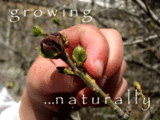From the great sunflower web site:
Bees help flowers make seeds and fruits. Bees go to flowers in your garden to find pollen (the powder on the flower) and nectar which is a sweet liquid. Flowers are really just big signs advertising to bees that there is pollen or nectar available – though sometimes a flower will cheat and have nothing! The markings on a flower guide the bee right into where the pollen or nectar is.Not just any sunflower will work - - the projext will send you seeds for sunflowers native to your area.
All flowers have pollen. Bees gather pollen to feed their babies which start as eggs and then grow into larvae. It's the larvae that eat the pollen. Bees use the nectar for energy. When a bee goes to a flower in your garden to get nectar or pollen, they usually pick up pollen from the male part of the flower which is called an anther. When they travel to the next flower looking for food, they move some of that pollen to the female part of the next plant which is called a stigma. Most flowers need pollen to make seeds and fruits.
After landing on the female part, the stigma, the pollen grows down the stigma until it finds an unfertilized seed which is called an ovary. Inside the ovary, a cell from the pollen joins up with cells from the ovary and a seed is born! For many of our garden plants, the only way for them to start a new plant is by growing from a seed. Fruits are just the parts of the plants that have the seeds. Some fruits are what we think of as fruits when we are in the grocery store like apples and oranges. Other fruits are vegetables like tomatoes and cucumbers and peppers.
"We need to know where are bees are doing well and how parks, gardens, natural areas and all sorts of habitats effect our bees” says Dr. Gretchen LeBuhn, the Sunflower Project’s Queen Bee. “Once we identify where bees need help, we can start improving their habitats!”
To get as many groups of individuals in your community to participate in The Great Sunflower Project, share our project with other gardeners, nature centers, other kids, and anyone who would like to stop and learn a bit more about our helpful friends.
So, plant a sunflower, count your bees, and make the world a little better place. For bees and for you.













No comments:
Post a Comment
We're happy to hear from you; thanks!